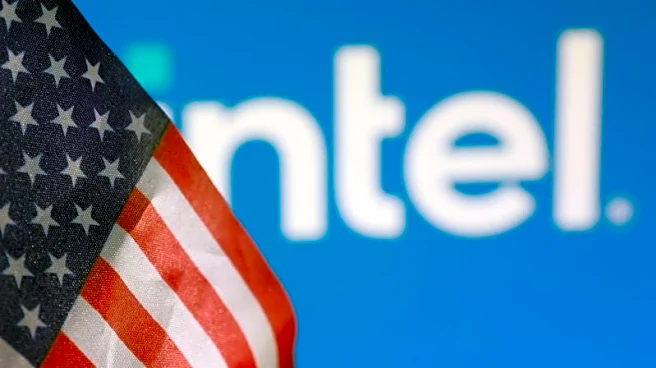What's Happening?
The U.S. government has taken a 9.9% stake in Intel, investing $8.9 billion in the American chipmaker. This strategic move, announced after negotiations between Intel CEO Lip-Bu Tan and President Trump, involves converting existing federal grants into equity. The investment includes $5.7 billion from the CHIPS Act and $3.2 billion from the Secure Enclave program. Despite the significant stake, the government will not have board representation but holds a warrant to purchase an additional 5% of Intel stock under certain conditions. This deal is part of a broader effort to enhance U.S. semiconductor manufacturing capabilities.
Why It's Important?
The U.S. government's investment in Intel highlights a strategic focus on bolstering domestic semiconductor production, which is vital for national security and technological leadership. This move aims to reduce dependency on foreign chipmakers and support Intel's efforts to regain its competitive edge. The investment comes at a critical time for Intel, which has faced challenges in keeping up with industry rivals. By securing government backing, Intel gains financial flexibility to pursue its manufacturing expansion plans, potentially revitalizing its market position and contributing to the U.S. economy.
What's Next?
The investment is expected to drive further developments in U.S. chip manufacturing, with potential implications for job creation and technological innovation. Intel's ability to leverage this support will be crucial in addressing its competitive challenges and advancing its strategic goals. The government's involvement in corporate affairs raises questions about future public-private partnerships and their impact on the tech industry. As Intel moves forward, stakeholders will be monitoring the company's progress and the broader effects of this investment on the semiconductor sector.












